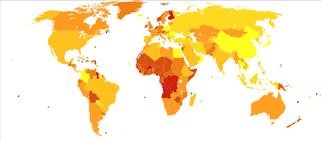The Infertility Organization
Infertility Clinic Abu Dhabi
We are the top source for complete information and resources for Infertility Clinic Abu Dhabi on the Internet.
Secondary infertility When a woman is unable to bear a child, either due to the inability to become pregnant or the inability to carry a pregnancy to a live birth following either a previous pregnancy or a previous ability to carry a pregnancy to a live birth, she would be classified as having secondary infertility. Options include intrauterine insemination (also known as IUI) or IVF with intracytoplasmic sperm injection (also known as ICSI).
Here are some common male infertility treatments. Mental stress: Stress can be a factor, especially if it leads to reduced sexual activity.
More Resources For Smoking Infertility Statistics

Here are Some More Resources on Infertility Cycle Day 3 Labs
If he has two X chromosomes and one Y chromosome, as in Klinefelter's syndrome, the testicles will develop abnormally and there will be low testosterone and a low sperm count or no sperm. With this treatment, the patient experience spermatogenesis, and therefore, it has the chance to have offspring if he wants to.
Below are Some More Resources on Smoking Infertility Statistics
Some problems stop an egg being released at all, while others prevent an egg being released during some cycles but not others. Infrequent and light menstruation occurs in about 40% of women with ovulatory dysfunction. B.: No role for basal body temperature charts) Basic Work-up for Infertility 14. Ovarian reserve -More important in >35 years old, suspected ovarian failure and to detect response to ovulation induction.
Even more Information About Infertility Clinic Abu Dhabi
WHO categorizes ovulatory disorders into three groups: group I is caused by hypothalamic pituitary failure (10%), group II results from dysfunction of hypothalamic-pituitary-ovarian axis (85%), and group III is caused by ovarian failure (5%). We get information regarding the woman's potential for adequate ovarian stimulation with medications by counting antral follicles. Structural abnormalities in the uterus: these can affect the cervix or the uterine corpus. Anomalies can be anatomical (septate uterus, T-shaped uterus, etc.) or pathologies that generate embryo implantation issues or issues with how the pregnancy progresses: polyps, endometritis, Asherman's syndrome - synechiae or adherences of the walls of the uterine cavity - or myomas, a benign tumour that generates anatomical distortion and makes getting pregnant complicated (this is one of the most common pathologies but does not necessarily cause fertility issues). In some women, and especially with age, the membrane becomes harder. Intrauterine insemination (IUI.)At the time of ovulation, sperm are injected directly up into the uterus. In those with azoospermia and a varicocele, sperm may appear after repair in up to one third, but most of these men return to an azoospermic state within a few months. If this is unsuccessful, the decision which form of artificial insemination is going to be used is made individually. It is in fact possible to restore ovulation using appropriate medication, and ovulation is successfully restored in approximately 90% of cases. Group II: hypothalamic-pituitary-ovarian dysfunction (predominately polycystic ovary syndrome). The extra heat caused by the vein can lead to low sperm count and impaired sperm movement. Showell MG, Brown J, Yazdani A, Stankiewicz MT, Hart RJ. Removal of polyps by the minimally invasive procedure hysteroscopy is associated with a doubling of pregnancy rate.
Previous Next
See also
Infertility Sterility Difference
Infertility Problems During Pregnancy
Bangladesh Infertility Management Center Dhanmondi